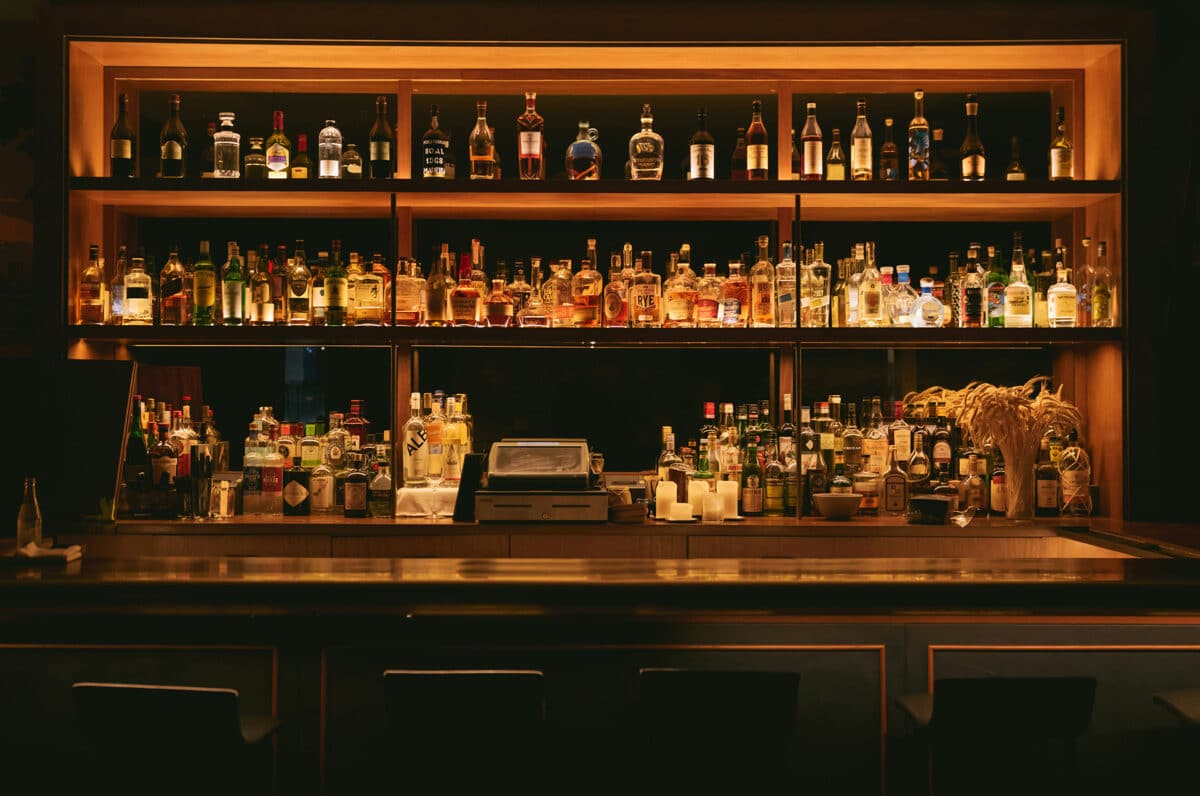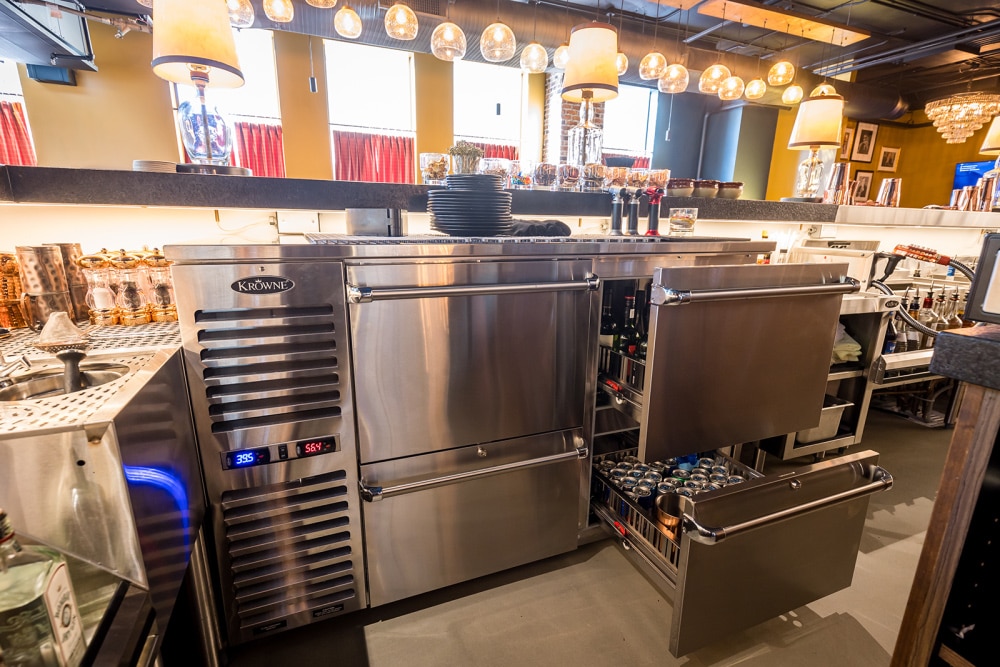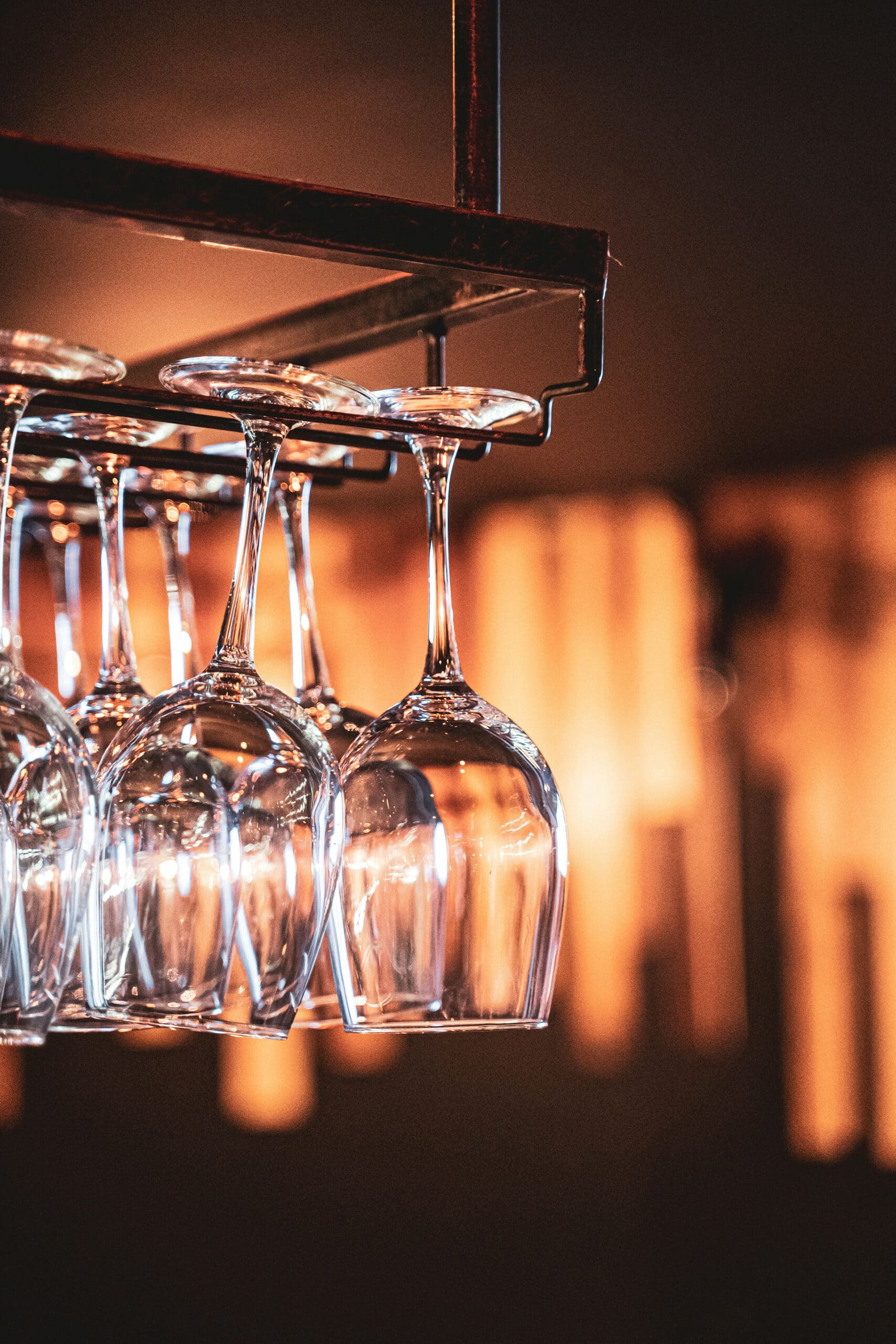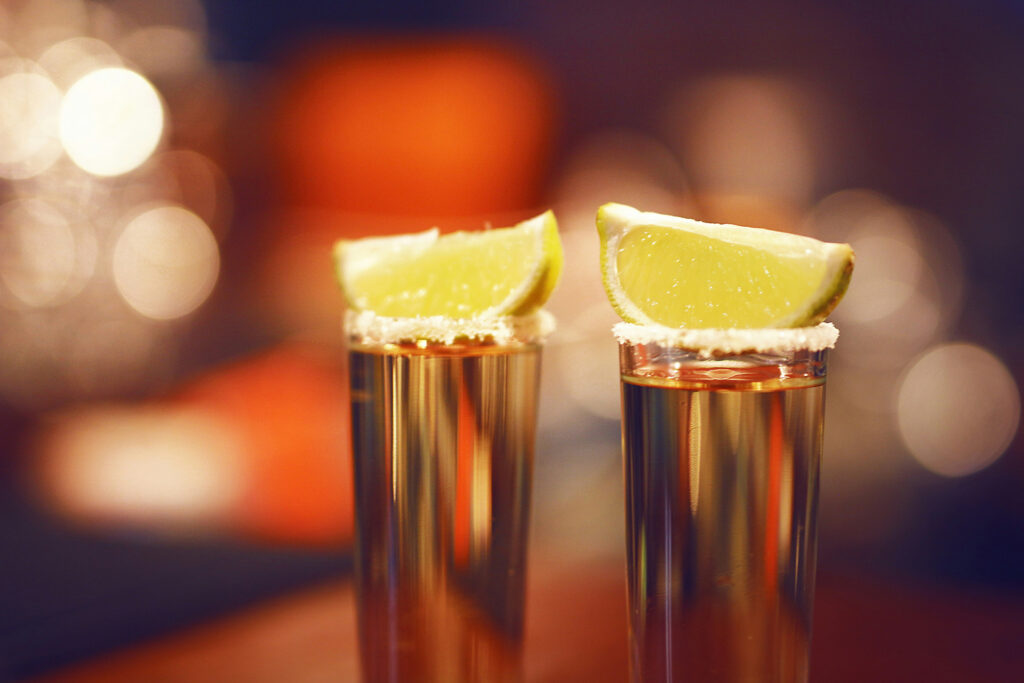The Ultimate Guide to Bar Tools and Equipment

Picture this: It’s Friday night, and the bar is filling up fast. It will be a busy night, but you love the rush. The sounds of clinking glasses and the happy laughter of your customers make it all worth it.
You turn to the older couple who have been sitting at the bar for the last twenty minutes. “Another round?” you ask. They nod in agreement.
You reach into the back bar cooler and grab a cold beer. A bead of condensation drips down the side of the bottle as you slide it across the bar to him. For his companion, you grab a tumbler and drop in a sugar cube and a few drops of bitters, then crush them with the muddler you took from the kit cup full of stainless steel bar tools. You measure two pony shots of whiskey in your jigger and pour that over the sugar. Next, you scoop some ice from the ice bin and top the concoction with a cocktail cherry. Then, the final touch—you grab a fresh orange peel from the cooler and squeeze it over the glass before dropping it in. The crisp citrus aroma hits your nose as you push the glass across the bar. You smile at your customers, confident in the quality and flavor of the whiskey old fashioned you’ve just mixed.
A couple of college kids walk up to the bar, eager to start the evening. You greet them and take a card to start a tab. “What’ll it be?” You ask.
One orders a beer from the tap list. Easy enough—grab a pint glass from the shelf and slowly draw back one of the tap handles. The tilted glass allows just the right amount of foam to float to the surface.
The second one can’t decide what she would like. “Something fruity, maybe,” she says. You survey your station. You have Martini glasses, highball glasses, champagne flutes, wine glasses, and Moscow Mule mugs. You have muddlers and stirrers, knives, bottle openers, peelers, shakers, strainers, and straws. Fresh ingredients are prepped in the cooler, ice cubes ready to go under the counter, and a fully stocked bar behind you. She may not know what she wants, but you know that you’ll be ready whenever she decides. And in the meantime? A round of shots! It’s no secret that when your bar is packed and busy, you want to know you have all the essential bartender tools to get drinks out quickly and professionally. At Eleven36, our top priority is stocking your bar with top-of-the-line drinkware and barware to cater to your customers. Here is our guide to all things bar supplies!
The Coolest Equipment: Bar Refrigeration

There’s nothing quite like a cold, refreshing beer or cocktail. To provide deliciously chilled beverages, your bar has to have the proper bar refrigeration. From draft beer dispensers to bar back and bottle coolers, Eleven36 carries top industry brands like Krowne and Hoshizaki.
Back Bar Cooler
When it comes to cocktails, you want to know that your fresh ingredients are kept cool, fresh, and safe from contaminants. Back bar coolers, like this model sold by Eleven36, are fridges that sit behind the bar at counter height and are perfect for storing prepped ingredients and cold drinks. These must-have appliances come in various sizes, often have glass doors for easy viewing, and can even feature different colored LED lights to make your bar look oh-so-cool.
Bottle Coolers
Like back bar coolers, bottle coolers are counter-height coolers behind your bar. However, they open from the top with sliding doors rather than front swing doors. This allows for maximum horizontal and vertical storage for beer bottles, wine bottles, cans, and other beverage containers. If you have a high-volume bar with limited storage space, bottle coolers are the way to go!
Nice Ice Machines
Whether shaken or stirred, most cocktails are made or served with ice. Having quick access to a self-replenishing and clean ice supply is essential to keep your bar running smoothly. Models like this Icetro America Undercounter Ice Machine will fit perfectly under your bar and produce over 200 pounds of ice daily!
Draft Beer Dispensers
As far as beer goes, most bars have two options: offer drinks by the bottle or can or buy in bulk and keep the brew on tap until it’s gone. To offer tap beers, you’ll need a draft tap equipped with a single cooler section and tap. However, draft beer dispensers can come with many more sections and taps and can be used to tap other kinds of drinks like hard ciders and non-alcoholic beverages, too!
Relax with Glass & Plate Chillers
Okay, imagine you’ve spent all this time creating a beautiful, crisp, refreshing cocktail. The last thing you’d want to do is pour it into a hot glass from the high-temperature dishwasher! Instead, ensure you always have nice cold glasses and plates for your bar service with a glass and plate chiller! These counter-height units come from 24″ to 50″ long and can be top-opening or have a swinging door.
Remember: these are also great for serving cold water, sodas, cheeses, desserts, and other items you don’t want to get too warm!
Wine Cellars
We’ve all seen pictures of elaborate wine caves and impressive basement wine storage rooms. So, what’s with all the fuss about wine storage? Wine requires specific temperature and humidity to stay in their absolute best condition. If you don’t happen to have a special basement wine cave ready to go, a wine cooler or cellar is your second-best option. These controlled environments have shelves that hold wine bottles at the right serving temperature and look impressive to boot! With the sales of wine increasing around the globe, wine cellars can be an easy way to draw customers in and impress them from the start.
Glassware: The Perfect Vessel for Any Cocktail
Having the appropriate glassware for any and every specific draft, pour, and cocktail is a great way to ensure that your bar is well-trusted and a favorite hangout for your best customers!
Beer Glasses, Not Goggles

In the great age of craft beers, the variety of beers to choose from is seemingly endless. So, it makes sense that you’ll want to have many different kinds of beer glasses on hand for serving. Most glasses fall into either the 4 oz., 8 oz., or 16 oz. (pint) category, but their various shapes can affect the foam/head, flavor, aroma, carbonation, and sip size.
Here are some common shapes for different kinds of beers:
- American Pint: These traditional tapered glasses are great for IPAs, light lagers, porters, and stouts.
- Imperial/English Pint: These glasses have a round “bump-out” near the rim and are often used for lagers, cream ales, red ales, scotch ales, and rye beers.
- Snifter: Snifters are deeply rounded and stouter than pint glasses. They are often used to serve stouts, quadruples, and barley wines.
- Tulip: Tulip glasses are stemmed and have an elegant curve to their cup. They are great for saisons, wild ales, dark ales, and scotch ales.
- Pilsner: These glasses are thinner than American pints, and their tapers are curved. They are great for pilsners, bocks, schwarzbier, and witbiers.
- Flute: Similar to a champagne flute, beer flutes are narrow and slightly curved and are often used to serve lighter and fruitier beers, bocks, Faros, Weizenbocks, or small pores.
- Stein/Mug: These traditional and hearty shapes have thick handles and are great for stouts, porters, ambers, and lagers.
Whine-less Wine Glasses

The situation can be even more complicated when it comes to wine glasses. The world of wines is notoriously particular and refined – and that doesn’t exclude the glasses! There are multiple types of glasses for each kind of wine that exist out there.
So, what does that mean for you? To begin with, you should aim to have the correct kind of glass for each type of wine you carry. Those include:
- Red wine glasses (the largest and most deeply rounded glasses – 5 oz.)
- White wine glasses (smaller and slightly narrower glasses – 5 oz.)
- Sparkling wine/champagne flutes (small and thin glasses – 4 oz.)
- Dessert wine glasses (small, rounded, or conical in shape – 2 oz.)
- Rosé glasses (wider and shallower or decorative like a diamond – 5 oz.)
Cocktail Glasses

For cocktails, while there is a wide variety of decorative cups to choose from, there are a few staple glasses you’ll need to have in your bar’s arsenal. Some cocktails – the Margarita, the Old Fashioned, the Martini, the Piña Colada, and the Moscow Mule – are typically served in specific glasses, so you’ll want to ensure you have those on hand. You have a little bit more leeway for your bar’s signature cocktails, but it is a good idea to have a mix of stemware and glassware.
Here is a good list of essential cocktail glasses you can use as a starting point:
- Lowball: A short, straight glass for serving spirits on the rocks or single-shot cocktails like the Old Fashioned and White Russian.
- Highball: A taller and narrower glass for serving classic “double” cocktails like Rum and Coke, Gin and Tonic, or anything with ice.
- Collins: A very tall cylindrical cup for cocktails that need a lot of ice, like a Tom Collins.
- Martini: A delicate and conical shape perfect for Martinis or Cosmopolitans.
- Coupe: Rumored to have been shaped after Marie Antoinette’s breast, this high-stemmed and shallowly-rounded glass is excellent for bubbly or specialty fruity cocktails.
- Margarita: Classically stemmed with a large, deep, double-rounded cup, this cup is great for cocktails with dipped rims, garnishes, and, of course, margaritas or daiquiris.
- Hurricane: A tall, deep cup with elegant S-curved sides often used to serve Piña Coladas, Hurricanes, and other bright and fruity drinks.
- Moscow Mule Mug: A copper-plated mug with a handle classically used for Moscow Mules and other icy clear drinks.
Shot, Shot, Shot Glasses

- Shot glasses are the smallest classic bar glasses and are typically used to serve a single serving of 1 to 3 oz. of alcohol at a time. They are often short and slightly tapered but can be thinner, narrower, or even rounded. For cocktails that include a dropped shot in the glass (Jager Bomb, anyone?), you’ll want a classic, short, thick-walled shot glass.
Tools of the Trade: What Will I Need Behind the Bar?

Whether you’re a professional bartender serving high-end cocktails or the local drink slinger behind the bar at a hole-in-the-wall neighborhood dive, you need the proper bar tools for the job. Here is our essential commercial bar equipment list.
Cocktail Shakers
“I’ll take that shaken, not stirred.” Imagine how awkward that scene would have been if the bar staff had responded, “We don’t have shakers.”
Cocktail shakers are probably the first thing most people think of when they imagine learning to make their own mixed drinks. That’s because these essential bar tools are the key to mixing cocktails with the right temperature, consistency, emulsification, and flavor. Plus, you get to show off your dance skills!
Strainers
When mixing drinks in a cocktail shaker, bartenders often include extra items for flavor – fruit juices, ice, or even small metal objects that help mix the liquid or create foam. A strainer is an indispensable tool for serving those drinks without all those extras falling into the glass. There are a variety of strainers out there – some with springs, others with holes or unique shapes – so you’ll want to make sure you have every kind of strainer you’ll need to make the drinks on your menu.
Muddlers
Muddlers are long rods that crush or “muddle” ingredients into a cocktail. This crushing helps release flavors from herbs, garnishes, and fruits so they can mix well into the drink. They come in various materials and shapes, so you’ll want to try a few to see which ones you like best.
Jiggers
Jiggers are specific equipment for measuring liquors and spirits. They are typically seen as two conical cups connected at the points and look a bit like an hourglass (double jigger). They come in different sizes and shapes, but it is common to see a 1 oz. cup on one side and 1.5 oz. cup on the other.
Bar Spoons
Unlike traditional tablespoons, bar spoons are long, thin, and perfect for stirring drinks in long and thin glasses. So, why do you need one? The design elements of a bar spoon serve specific purposes. The long, twisted handle expertly mixes cocktail ingredients. The flat, spoon-like end is designed to softly pour liquids to create layered shots and gradient colors in specialty cocktails. I bet your tablespoon can’t do that!
Knives/Zesters
They may not seem like the most essential bar tools, but knives and zesters are handy for preparing garnishes and slicing flavor add-ins like fruit or chocolate.
Bottle Openers and Stoppers
Okay, this is a no-brainer. You have to be able to open your bottles, right? Wine keys and wine corkscrews are a must for opening bottles of corked wine. And just about every bartender should have a tried-and-trusted bottle opener in their pocket! Bottle stoppers are also essential for preserving opened bottles.
Bar Furniture: Sit and Stay Awhile

While these essentials aren’t behind the bar, any successful bar owner knows that the right bar furniture improves your customer’s overall experience.
Bar Stools
If you want your customers to be comfortable hanging out at your bar and ordering multiple drinks, you’ll want to be sure your bar stools are on point. It’s pretty easy to find stools to match the interior style of your space, but there are specific safety guidelines you should keep in mind while shopping around:
- Height: While some stools have adjustable heights, most don’t. Aim for your stools to sit 19-12 inches below your counter height.
- Space: It may be tempting to cram as many stools at your counter as possible, but designers typically recommend at least 24-30 inches of counter space per stool. This gives your customers space and easy access to the bar.
- Backs or Backless: Having backs (especially cushioned backs) on your stools can make your space look and feel more elevated, but they can make it more difficult for people to gather in front of the bar. If your establishment tends to have a lot of standing customers and large crowds, backless stools might be a better option for you.
- Width: Smaller stools might mean you can fit more at the bar, but again, more isn’t necessarily better. Smaller stool seats are less comfortable for your customers and may present some accessibility issues.
- Durability: It may be obvious, but you definitely want heavier and more durable stools. The last thing anybody wants is to have stools collapse or fall backward, which could put the safety of your customers at risk!
Bar Tables
Bar tables are a great idea if your bar gets large crowds or has available space for standing customers. If your establishment is exclusively a bar (as opposed to a sit-down restaurant), then bar tables are a great addition to your space.
As with bar stools, there are certain specifications you’ll want to follow. Typical bar tables sit between 40″ and 42″ high. They should be nice and sturdy and big enough that your customers have room to stand around them without too much crowding. Don’t forget necessary tabletop accessories as well – if your bar serves food, accessories like napkin holders and dispensers or condiment caddies are great additions for convenience.
A Bar of Soap is a Bar with Hope: Essential Bar Cleaning Supplies
Like any food service establishment, sanitation and cleanliness should always be at the top of your bar equipment checklist. Prioritize wiping down the bar and sanitizing tools, glasses, and measuring equipment when time allows. Keep up with resetting stools, replenishing prepped items, cold drinks, and open bottles, and regularly removing the trash.
Here’s a list of sanitation and cleaning tools for you to keep on hand:
- Disinfectant sprays and surface cleaners
- Bar towels
- Glass cleaners (brushes, glass washer, clean towels)
- Tools specifically cleaned and set aside for customers with food allergies.
- Broom/vacuum for cleaning dropped glassware/plates/food items.
- Hand sanitizer
- Solutions for sanitizing fountain/water lines and ice makers

Closing Out the Tab on Bar Equipment
At the end of the day, you want your bar business to stand out and be a place where people want to spend time. What’s the best way to do that? By having a clean space, comfortable accommodation, the right equipment, essential bar tools, high-quality ingredients, and the specific glasses required to serve every order that comes across the bar correctly!At Eleven36, we believe having the right bar equipment is a long-term investment for your business’s success. Need help getting your dream bar up and running? Reach out to the helpful customer service team at Eleven36 today.
